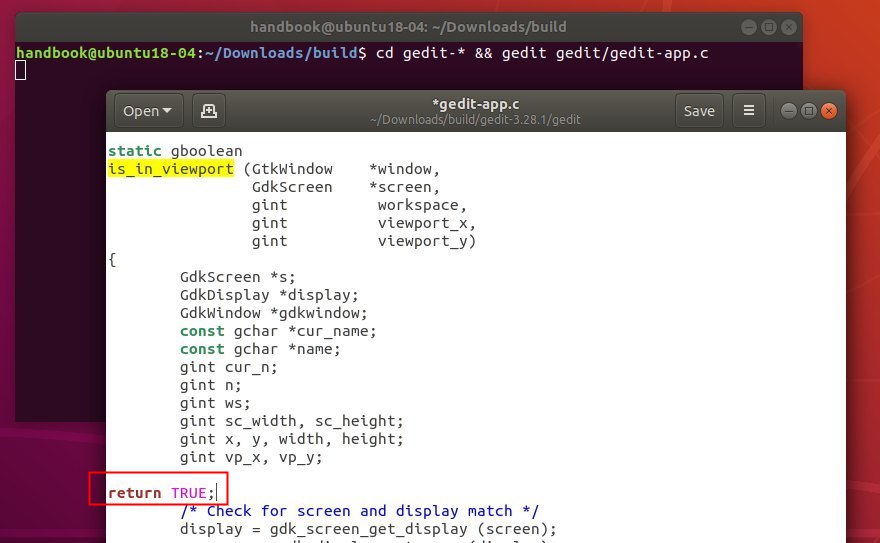

#WHAT IS GEDIT COMMAND IN LINUX HOW TO#
If you are using Ubuntu then you may want to check out my tutorial on how to install the Guake Terminal which is a floating terminal in the graphical user interface (GUI) that is linked to the F12 button. Ctrl + Alt + F7 will switch you back to the graphical user interface. F1 through F6 switch to a different console or tty1 through tty6. You can also access the command line in Ubuntu by pressing the key combination Ctrl + Alt + F1, which will switch you to a black screen and a login prompt asking you for your username. gedit can open an existing text file by using the name of the file as an argument (i.e., input data) with the gedit command. This is the most common way to access the terminal and does not take you away from the GUI. You can typically access the command line by opening up a terminal when using Linux in a desktop environment. You should note that it typically does not matter which flavor or version of Linux you’re using the commands used in the command line will typically be the same. This will help you in your journey of using the Linux operating system. As a user of Linux you will want to at least learn how to do basic things in the command line and the format of commands. The command line is very powerful in Linux and should not be taken lightly that being said once you learn how to use the command line and do basic tasks the command line will be very helpful when you are using any version of Linux. Here recently Linux has been making major improvements on user-friendliness and the command line does not have to be used as often and for as many tasks. I feel that because this happened Linux got a bad reputation for being unfriendly for new users. Not too long ago many tasks that had to be completed on Linux had to be completed by using the command line interface. The command line is also known as the terminal, shell, the console, command prompt, and command line interface ( CLI). The command line is simply much more efficient than using the graphical user interface. Whether I am installing programs or managing users and permissions I find that I am much faster when using the command line. You receive this error because in ubuntu root account is disabled by default.Hardly a day goes by when I do not sit down at my computer and fire up the command line. In ubuntu you might receive authentication failure when you run su command. etc/bashrc and ~./bashrc scripts are executed. But with su, only bashrc scripts are executed, i.e. When you login with 'su -' command, all of these scripts are executed. When a user logs into a system, the following 4 files are executed if the user's credentials are legitimate: /etc/profile usr/kerberos/sbin:/usr/kerberos/bin:/usr/local/sbin:/usr/local/bin:/sbin:/bin:/usr/sbin:/usr/bin:/root/binĪnother difference between these two commands is the login scripts. Now we try to login with su - command: ~]$ su ~]# fdisk -lĢ55 heads, 63 sectors/track, 1044 cylinders


You can see that sbin directories are not included in the root user's PATH.
/gedit2-58504af23df78c491ebf92eb-5bcf707346e0fb00513a16b3.jpg)
usr/kerberos/sbin:/usr/kerberos/bin:/usr/local/bin:/bin:/usr/bin:/home/jack/bin For example consider the following scenario: ~]$ su jack]# fdisk -līash: fdisk: command not jack]# echo $PATH Some commands may not run if PATH is not properly set. The difference between 'su' and 'su -' is that some environment variables such as PATH variable do not change values with just su (i.e. Uid=501(jack) gid=501(jack) groups=501(jack),504(javaproject) context=root:system_r:unconfined_t:SystemLow-SystemHigh Differenence between su vs su. With su -login or su -l or just 'su -' command, you can switch user as if it were a login from a terminal. Uid=0(root) gid=0(root) groups=0(root),1(bin),2(daemon),3(sys),4(adm),6(disk),10(wheel) context=root:system_r:unconfined_t:SystemLow-SystemHigh Simulating login with su.


 0 kommentar(er)
0 kommentar(er)
